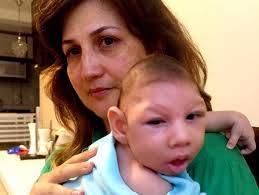Zika Virus: Understanding the Threat, Impact, and Prevention
In the realm of infectious diseases, Zika virus has emerged as a formidable concern, capturing global attention due to its rapid spread and potential for severe health complications. Initially discovered in the Zika Forest of Uganda in 1947, the virus garnered limited attention until recent outbreaks highlighted its capacity to cause significant harm, particularly among vulnerable populations. This article aims to delve into the intricacies of Zika virus, from its origins and transmission to its associated health risks and preventative measures.
### Understanding Zika Virus
Zika virus belongs to the Flaviviridae family and is primarily transmitted through the bite of infected Aedes mosquitoes, particularly Aedes aegypti and Aedes albopictus. These mosquitoes are prevalent in tropical and subtropical regions, making Zika virus endemic in many parts of the world.
1. **Transmission:** Apart from mosquito bites, Zika virus can also spread through sexual contact, blood transfusions, and from mother to child during pregnancy or childbirth. This multifaceted transmission mechanism has contributed to the rapid spread of the virus across continents.
2. **Symptoms:** The majority of individuals infected with Zika virus remain asymptomatic or experience mild symptoms such as fever, rash, joint pain, and conjunctivitis (red eyes). However, the virus poses significant risks, especially for pregnant women, as it has been linked to severe birth defects such as microcephaly—a condition characterized by abnormal brain development and a smaller-than-normal head size—in newborns.
3. **Geographical Distribution:** Historically, Zika virus was confined to Africa and Asia. However, recent outbreaks in the Americas, particularly in Brazil in 2015, catapulted the virus to global attention. Since then, Zika has spread to various regions, including parts of the United States, Southeast Asia, and the Pacific Islands.
### Health Risks Associated with Zika Virus
While Zika virus infection often manifests as a mild illness, its potential to cause severe health complications cannot be understated. Key health risks associated with Zika virus include:
1. **Congenital Zika Syndrome (CZS):** Perhaps the most concerning consequence of Zika virus infection during pregnancy is the risk of CZS, a constellation of birth defects that can affect the baby's brain development. Microcephaly, a defining feature of CZS, is often accompanied by other neurological abnormalities, hearing and vision impairments, and joint problems.
2. **Guillain-Barré Syndrome (GBS):** In addition to CZS, Zika virus infection has been linked to Guillain-Barré Syndrome, a rare but serious autoimmune disorder that can cause muscle weakness, paralysis, and, in severe cases, respiratory failure. While the exact mechanism of Zika-induced GBS remains under investigation, evidence suggests a strong correlation between the two conditions.
3. **Sexual and Perinatal Transmission:** Beyond its immediate health effects, Zika virus can have long-term consequences through sexual and perinatal transmission. Pregnant women infected with Zika can transmit the virus to their fetuses, resulting in CZS. Moreover, sexual transmission poses a risk of Zika infection even in regions where Aedes mosquitoes are not endemic, highlighting the importance of comprehensive prevention strategies.
### Prevention and Control Measures
Given the significant health risks associated with Zika virus, prevention and control efforts are crucial in mitigating its impact. Key strategies include:
1. **Mosquito Control:** Since Aedes mosquitoes are the primary vectors of Zika virus, effective mosquito control measures are essential for reducing transmission. This includes eliminating breeding sites such as stagnant water containers, using insecticide-treated bed nets, and deploying larvicides and adulticides to target mosquito populations.
2. **Personal Protection:** Individuals living in or traveling to areas with Zika virus transmission should take proactive measures to protect themselves from mosquito bites. This includes wearing long-sleeved shirts and long pants, using insect repellents containing DEET, picaridin, or oil of lemon eucalyptus, and staying in accommodations with screened windows and doors.
3. **Safe Sexual Practices:** Given the potential for sexual transmission of Zika virus, individuals should practice safe sex or abstain from sexual activity if they or their partner have traveled to areas with Zika transmission. This includes using condoms correctly and consistently, particularly for individuals planning pregnancy or who are pregnant.
4. **Prenatal Care:** Pregnant women should seek early and regular prenatal care to monitor their health and the development of their fetus. Healthcare providers should assess pregnant women for possible Zika virus exposure and provide appropriate testing and counseling to minimize the risk of CZS.
5. **Blood Safety:** To prevent transfusion-transmitted Zika virus infections, blood collection centers should implement donor screening measures and test donated blood for Zika virus RNA, particularly in areas with active transmission. Additionally, individuals who have recently traveled to Zika-affected areas should defer blood donation for a specified period.
### Conclusion
Zika virus represents a significant public health challenge, with the potential to cause severe health complications and impact vulnerable populations, particularly pregnant women and their infants. While efforts to control mosquito populations and reduce transmission are ongoing, addressing the underlying socio-economic factors that contribute to Zika virus spread remains paramount. By adopting comprehensive prevention and control measures, including mosquito control, personal protection, safe sexual practices, prenatal care, and blood safety protocols, we can collectively mitigate the impact of Zika virus and safeguard the health and well-being of communities worldwide.


